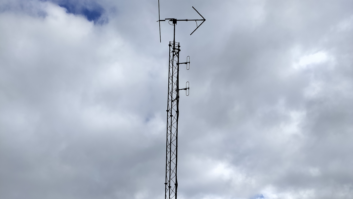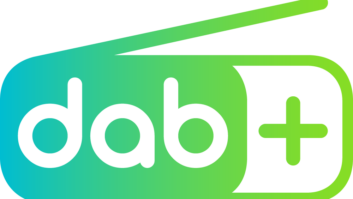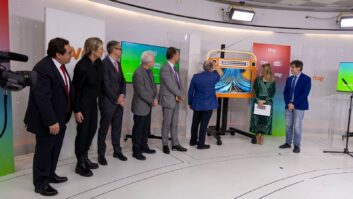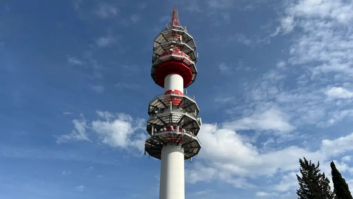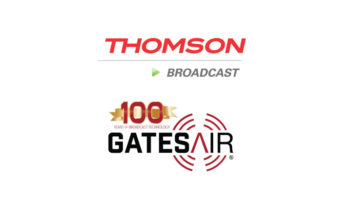Ibiquity Officials, Manufacturers Will Take Part In a Day-Long Seminar on the Status of Digital
As broadcasters prepare for the IBOC age, a lot of questions are being asked. Can we use our existing equipment? How much of the physical plant has to be converted for the digital process? How soon do we have to be ready?
Will this be the end of analog radio?
By NAB2002 next spring, several IBOC broadcast products may be available. The first consumer receivers are anticipated at the 2003 Consumer Electronics Show.
Will the technology really be ready to roll out on time? What kind of costs will stations incur due to the conversion?
These questions will be addressed in the all-day Digital Radio Certification Workshop, Thursday, Sept. 6 from 10:30 a.m. to 5 p.m. at the Morial Convention Center.
Speakers will deal in specifics.
“We did a presentation at NAB2001 in Las Vegas,” said Jeff Detweiler, broadcast technology manager for iBiquity Digital Corp, the company developing in-band, on-channel digital audio broadcasting technology.
“This time, we want to explain the technical implementation, high- and low-level combining and the costs that are involved.”
IBiquity executives and manufacturers tooling up for IBOC will constitute the panel of experts. Hosting will be John Marino, vice president of science and technology at the NAB, and Scott Stull, director of broadcast business development at iBiquity.
Science project
“Broadcasters have looked at IBOC as a ‘science project’ in the past,” said Stull. “We are hoping to generate a lot of discussion. The session will be split between the business issues of IBOC, with a nuts-and-bolts discussion in the afternoon to help stations get ready.”
One thought weighing on some broadcasters’ minds is the “demise” of analog radio. Stull said not to worry.
“There are 600 to 700 million receivers in use now,” he said, “especially those fifteen-dollar bed-stand AM/FM alarm clocks. We are not recommending any mandatory IBOC switchover, and a transition could take 12 to 15 years. Broadcasters and consumers can change over when they want.”
Many stations are built out as digital facilities, with entire audio chains now passing digital bits in place of analog audio. The only time there is a conversion to analog is at the transmitter.
“Eventually, we’d like to see an all-digital path,” said Stull. “Lots of people have already spent millions to go digital in-plant.”
Testing out
The iBiquity AM and FM IBOC systems continue to be tested, with results soon to be submitted to the National Radio Systems Committee for approval.
One important aspect of IBOC planning is the studio-transmitter link. This aspect will be addressed by Bill Gould, broadcast products manager for Harris Corp., among the manufacturers taking part in a roundtable discussion in the afternoon.
“For one thing, the sample rates have to be at top levels,” said Gould. “Current digital STLs sample at 32 kHz to provide the 15 kHz audio response of conventional FM. IBOC STLs will have to have 44.1 kHz throughput.”
When stations operate in the hybrid mode of IBOC, both analog and digital signals must be combined somewhere along the line. The impact of the digital signal on the existing analog signal is of concern to broadcasters – a concern not lost on Gould.
“There are reasons why this may or may not work,” he said. “Broadcasters must maintain the fidelity they have today and a lot of this is not decided yet.”
Answering concerns about transmitters will be Daryl Buechting, senior manager of radio products for Harris.
Can-do
“A typical question from broadcasters is, ‘Can I do IBOC with my transmitter?’ It can be possible with an existing FM transmitter, an IBOC transmitter and a high-level combiner,” Buechting said. “A future transmitter will perform low-level combining, or what’s called common amplification.”
Combining those signals and maintaining isolation between competing IBOC stations also comes under the province of Tom Silliman, president of Electronics Research Inc.
Eric Wandel, director of product development for ERI, said, “Tom will be making the presentation at the NAB Radio Show. Say you have a multiplexed site: four stations, all combined in one antenna. You have existing transmitters and IBOC transmitters, and all must have their piece of the spectrum protected. You need a combination of filters and combiners to keep them isolated.”
Wandel said Silliman will address the needs of cost, space and cooling requirements for a combiner-filter system when planning for the IBOC rollout.
Also representing the manufacturing side will be Jeff Keith, engineering project manager for Omnia/Telos Systems. Other iBiquity officials on the panel include Senior Vice President Jeff Jury to provide an overview of IBOC as a business; Pat Walsh, vice president of wireless data business development, to explain the revenue opportunities of IBOC above and beyond the audio channels; and Glynn Walden, vice president of broadcast engineering, to explain the testing process and what will be handed over to the NRSC.
The IBOC session is in the same room and immediately following the session “Engineering Legends,” a panel of recent winners of the NAB Radio Engineering Award.






